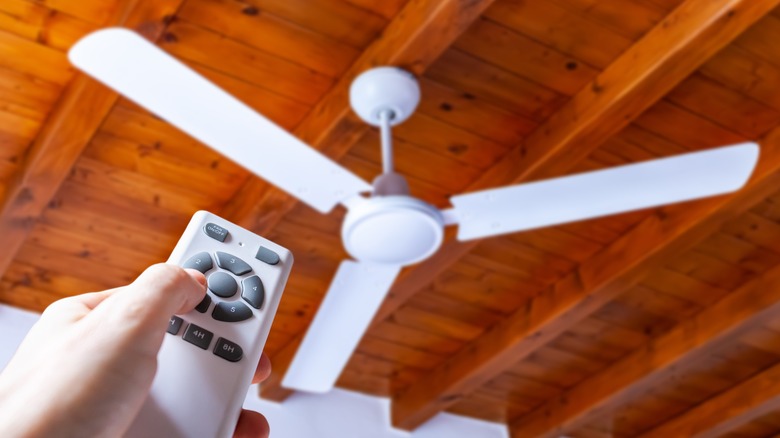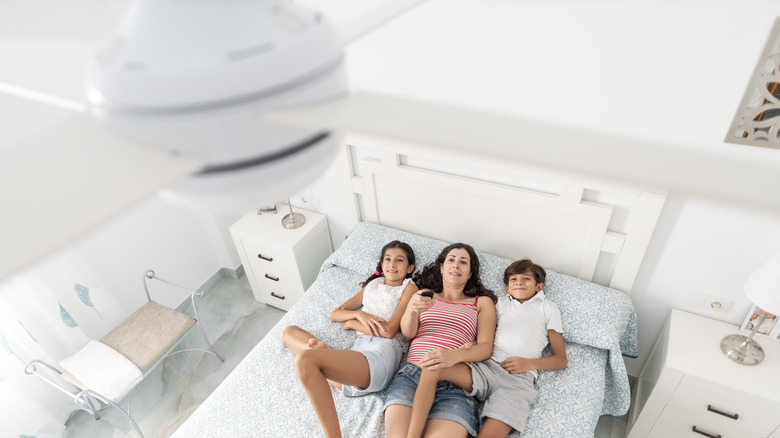Which Direction Should Your Fan Spin For The Summer, Or Does It Matter?
Ceiling fans are a mainstay in many American homes, but despite their prevalence, many individuals underutilize their potential. Designed to circulate air around rooms, they can increase your comfort and help you keep cool this summer if used properly. In addition to helping you be comfier at home, using a ceiling fan correctly can yield impressive energy savings.
If you have a ceiling fan, you've likely noticed that its blades sit at a slight angle on the fan arms; this allows them to create a downdraft or updraft, which will impact your comfort level. In summer months, you want your ceiling fan to spin counterclockwise, which will result in a cooling effect. In order to change your ceiling fan's blade direction, look at the fan from underneath and take note of what direction it's spinning. If it's going clockwise, you'll need to turn off the fan, then grab a stepladder and (once the blades have stopped spinning) locate the reverse switch, which is usually on one of the fan base sides. Flip the switch and you'll have changed the spinning direction of the blades, which will deliver a more efficient cooling effect.
How to get the most out of your ceiling fan
There's no denying that a spinning fan creates nice ambient noise, but a fan's benefits extend far beyond fostering a relaxing environment (so long as you regularly dust your ceiling fan to hold allergens at bay). Since ceiling fans push air around a room, they can actually create a minor windchill effect in your home, even if the air conditioning isn't running. This can make you feel 4 degrees cooler when you're in a room with a fan on; bear in mind that the fan isn't actually impacting the temperature of the room, just your experience, so don't leave the ceiling fan on if you aren't home to save energy costs.
Practically speaking, you can raise your home thermostat 4 degrees at night, so long as you have the ceiling fan running counterclockwise, and you'll feel just as comfortable as if the temperature was set 4 degrees lower. This small change can result in savings of up to $110 over the course of summer. Another benefit of utilizing ceiling fans more and air conditioning less is that this practice can give your central cooling system a break. The lower you set your temperature inside on hot days, the harder your air conditioning unit will have to work. By setting your thermostat a few degrees higher and using your counterclockwise-spinning fan, however, you can achieve the same comfort without expecting too much from your home's valuable cooling system.

